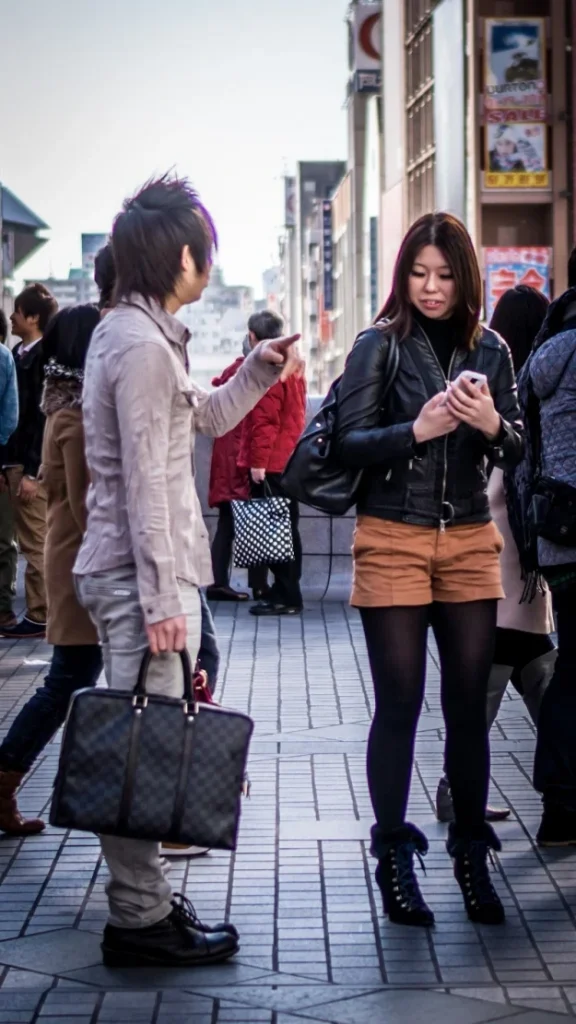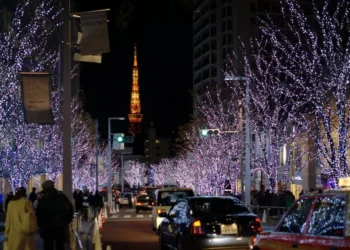No products in the cart.
The Art of Nampa in Japan: Flirting, Culture, and Controversy
Introduction
Nampa in Japan is a unique social phenomenon that blends flirting, dating culture, and street interaction into one. It refers to the act of approaching strangers, usually women, with the intention of starting a conversation that could lead to a date or a relationship. While it might look similar to “pickup” culture in the West, nampa in Japan has its own history, methods, and social nuances that make it distinct.
In this guide, we’ll explore the origins of nampa in Japan, how it works today, the common places where it happens, and why it continues to spark debate between those who see it as harmless fun and those who criticize it as intrusive.
1. Understanding Nampa in Japan
The word “nampa” (ナンパ) is slang that roughly means “soft hitting on” or “flirty approach.” It has been part of Japanese youth culture for decades, especially among young men in urban areas. Nampa in Japan is often about making a quick connection with a stranger—sometimes for romance, sometimes just for casual fun.
However, it’s not just about charm and confidence. Successful nampa requires an understanding of social cues, politeness, and the ability to engage without making the other person uncomfortable. In Japan’s group-oriented and reserved society, breaking the ice with a stranger can be challenging, which makes nampa a kind of social skill for those who practice it.
2. A Brief History of Nampa
Nampa in Japan became more visible during the 1970s and 1980s, a time of economic growth and youth freedom. Popular spots like Shibuya, Shinjuku, and Umeda became hubs for street interactions, especially near busy train stations and nightlife districts.
In the 1990s, nampa culture grew with the rise of fashion trends like Shibuya-kei and streetwear, where young men and women gathered in large numbers. The act became almost ritualistic—men would form groups, scan the crowd, and approach women they found interesting. Some even made a name for themselves as skilled “nampa-shi” (nampa practitioners).
3. How Nampa Works Today
Modern nampa in Japan still happens in busy districts like Shibuya’s Center Gai, Shinjuku’s Kabukicho, Osaka’s Namba, and Sapporo’s Susukino. However, it has evolved alongside technology. While traditional nampa involves direct face-to-face approach, many young people now mix it with online dating apps, using them to warm up a conversation before meeting in person.
The typical steps include:
- Approach – Start with a polite greeting or light comment.
- Engage – Ask questions to keep the conversation flowing.
- Establish Common Ground – Find a shared interest to create comfort.
- Invite – Suggest grabbing a coffee, walking together, or exchanging contact info.
It may sound simple, but the real skill lies in timing, body language, and respecting boundaries.

4. Common Locations for Nampa
Certain areas are known hotspots for nampa in Japan:
- Shibuya, Tokyo – Especially near Hachiko statue and Center Gai.
- Shinjuku, Tokyo – Around Kabukicho and station exits.
- Osaka’s Namba District – Known for nightlife and street energy.
- Ikebukuro, Tokyo – Popular among younger crowds.
- Harajuku and Omotesando – Daytime nampa spots for fashion-conscious youth.
In these places, the density of people and vibrant atmosphere make spontaneous encounters more likely.
5. The Social Rules of Nampa
Nampa in Japan is shaped by unspoken etiquette. While the goal is to connect with someone, the approach must feel respectful. Overly aggressive or persistent behavior is frowned upon and can easily be seen as harassment.
Some important guidelines include:
- Be polite and friendly from the start.
- Keep physical distance unless the other person shows comfort.
- Accept rejection gracefully.
- Avoid targeting people who clearly look busy or uncomfortable.
Following these rules is not only about politeness—it’s about maintaining the delicate balance between spontaneity and social boundaries.
6. Why People Do Nampa
The motivations for nampa in Japan vary. For some, it’s about meeting potential partners outside of work or school, which can be challenging in Japan’s busy society. For others, it’s simply about building social confidence and enjoying the thrill of spontaneous interaction.
There’s also a playful element. Among friends, nampa can be a kind of social game—seeing who can make the best impression or get a phone number first. This competitive yet lighthearted spirit has kept the tradition alive in youth culture.
7. The Criticism and Controversy
While some see nampa in Japan as harmless flirting, others argue it can be uncomfortable, especially for women who are approached repeatedly. In busy nightlife districts, the line between nampa and aggressive solicitation can blur.
In response, some areas—like parts of Shibuya—have introduced anti-nampa rules, especially near school zones or public gathering spots. These regulations aim to prevent harassment and ensure public spaces remain safe for everyone.
8. Nampa vs. Modern Dating Apps
With dating apps like Tinder, Pairs, and Bumble growing in popularity, some say nampa in Japan is becoming less common. Apps allow people to screen matches before meeting, which removes the risk of unwanted public encounters.
However, others argue that digital dating lacks the excitement and authenticity of face-to-face nampa. The art of reading expressions, sensing chemistry in real time, and making someone smile on the spot is something apps can’t fully replace.
9. Nampa in Popular Culture
Nampa in Japan has been featured in TV dramas, manga, and even comedy shows. Sometimes it’s portrayed as charming and romantic, other times as awkward or ridiculous. Shows often highlight the humorous side of failed approaches, reflecting the reality that not every attempt goes smoothly.
Manga targeting young male readers often include “nampa chapters,” where characters learn techniques or compete in playful challenges to impress women.
10. The Future of Nampa
As Japan’s society changes, so does the art of nampa. Younger generations are more aware of consent and respectful boundaries, which means modern nampa is often softer and more careful than in past decades.
Events like street festivals, fireworks shows, and seasonal gatherings still create natural opportunities for casual conversation. As long as people value direct human connection, nampa in Japan will likely survive—adapting to fit new cultural expectations.
Final Thoughts
Nampa in Japan is more than just flirting—it’s a social ritual, a playful game, and sometimes a controversial topic. It reflects both Japan’s reserved nature and the human desire to connect with strangers in unexpected moments.
For those curious about experiencing nampa—whether as a participant or an observer—it’s important to remember that success comes from charm, respect, and genuine interest, not pressure or persistence. Done right, it can lead to fun stories, new friendships, and even lasting relationships. Done wrong, it can cross into unwanted territory.
Like many aspects of Japanese urban culture, nampa balances tradition and modernity, public space and personal boundaries. And in a country where much of daily life is structured and predictable, it remains one of the few social spaces where spontaneity still thrives.










